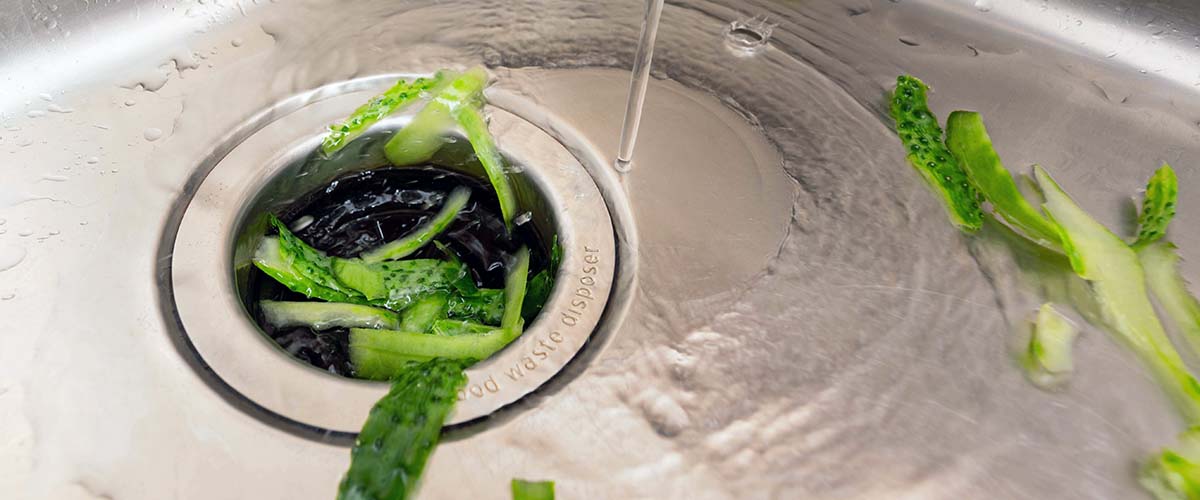The sink won’t drain, the switch just hums, and the air has got a musty odor. Your garbage disposal just doesn’t seem to be working as it should. Take a breath. Disposals are tougher than they look—but they’re not wood chippers. After years of serving Winston-Salem homes, I can tell you nine times out of ten, a calm reset and a few smart moves get you back to coffee and eggs. And if it’s more than that, you’ll know before you risk a finger.
Quick story: I once fished out a wedding ring and a chicken wing from the same unit—both lived to tell the tale. In this post, we’ll cover what you can put in a garbage disposal, what not to put, how to clear jams, and when to give up.
Good bets:
- Soft scraps: cooked veggies, small bits of meat, fruit trimmings without pits.
- Citrus peels in small amounts for a fresher smell.
- Cold water, lots of it, before, during, after.
- A few ice cubes now and then; they knock gunk loose.
Go easy or skip:
- Starches like rice, pasta, and potato peels. They turn to paste.
- Fibrous stuff: celery strings, corn husks, onion skins—the strings lasso the impellers.
- Eggshells and coffee grounds—fine grit clogs traps and settles like sand.
- Grease and oil coats pipes, then you hear that hollow thunk as the trap fills up.
- Hard items: pits, bones, nutshells, or any mystery “what is this?” from the back of the fridge.
Feeding the disposal slowly is half the battle won. Dribble, don’t dump it. Treat the garbage disposal like a sink, not a trash can. For more detailed guidance, check out this video guide on what you can and can’t put in garbage disposals.
How to Fix a Garbage Disposal?
Your disposal is humming but not spinning? Flip the switch off. Always. Safety first. Grab a flashlight and tongs, not your fingers. Fish out any foreign object.
Micro-story: In Ardmore, a unit shot grease onto the ceiling when someone hit the switch mid-clog. Two towels. One apology.
Next, press the red reset button on the bottom of the unit. Stuck? Use a 1/4-inch Allen wrench in the hex socket underneath and rock the flywheel back and forth. You’ll feel it free up. Turn the water on, test again.
Dead silent? Check the GFCI outlet and the breaker box. Loose connections at the switch can occur—older toggles can burn out. Leaking at the side discharge? Tighten the screws and replace the gasket if it weeps. At the sink flange, loosen the mounting ring and re-bed it with plumber’s putty.
Dishwasher not draining through the disposal? The knockout plug might still be in the inlet. I always check the aerator first—habit—but then I pop that plug.
Maintaining and Cleaning Your Garbage Disposal
Smells creeping up? Start with the splash guard. That black rubber baffle gets slimy and holds stink. Pull it, scrub with dish soap and a toothbrush. Rinse with cold water, then run a handful of ice and add a tablespoon of rock salt. It will be loud for a moment and then get better.
For a deeper clean, toss in a half-cup of baking soda, followed by a cup of warm vinegar. Foam party. Let it sit for five minutes, then rinse under cold water. Citrus peels afterward, not before. And keep the water running thirty seconds after the noise stops; it flushes the line, not just the chamber.
Hard water around here leaves mineral crust on the baffle and drain lip. A quick white vinegar wipe helps. Speaking of smells, if it still stinks, check the trap under the sink for settled sludge. That’s where the “wet dog” lives. Professional drain cleaning can help with persistent odors. Unexpected trick: drop a few ice cubes dyed with food coloring—watch for tinted drips at the flange to spot a leak fast.
When To Call for Professional Help
Call someone when you smell electrical—hot, sharp, wrong. Or when the reset trips daily. If the unit hums and the flywheel still won’t budge with a wrench, the motor’s likely cooked. Cracks in the housing? Replace the whole thing. Leaks that soak the cabinet overnight mean damage you can’t see. And if the unit’s older than 10–12 years, money’s better on a new one with a proper cord kit and strain relief.
Older homes in West End love to surprise you: wobbly sink flanges, thin traps, and galvanized threads that crumble if you glare at them. Water pressure matters, too; most houses I test run about 50 PSI—above 80 and you’re asking for trouble with joints and seals. Micro-story: Found a spoon wedged so tight it bent the impeller; the motor smoked like a July grill—unit was done.
If you’re unsure of repairs or troubleshooting, stop. Water off. Power off. Then call our experienced plumbing professionals for help with complex kitchen plumbing issues.
Frequently Asked Questions About Garbage Disposal Units.
Can I put eggshells in my garbage disposal unit?
Better not. The membrane wraps the blades, and grit settles in the trap.
Should I put hot or cold water in my garbage disposal unit?
Cold. It keeps fats solid so they move down the line instead of painting it.
Is it okay to put coffee grounds in my garbage disposal unit?
Small amounts are okay sometimes, but they collect. Your plumber’s snake will find them.
How long should I run my garbage disposal unit?
Run the disposal until the grind is smooth, then 20–30 seconds more with cold water.
What are safe cleaners for garbage disposal units?
Baking soda, vinegar, and mild dish soap. Skip caustic drain openers—bad for seals.
Why does my garbage disposal unit chatter?
A foreign object or loose baffle. Kill power, inspect with tongs and a light.
If your garbage disposal unit growls like gravel every time you use it, something’s still in there. Don’t wait for it to fix itself.

